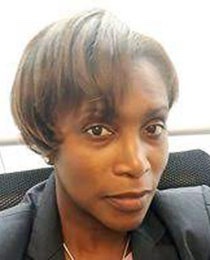What do you study and what initially drew you to your work?
My research has focused largely on child and adolescent violence exposure, including community, family, and war violence. I also examine the disproportionate risk of violence exposure for marginalized youth and recently I have been considering the many forms and expressions of identity-based violence. In general, I am interested in all aspects of how trauma and violence exposure may impact youth behavioral, social, emotional, cognitive, and physical development. I am also interested in differences in prevalence and impact across socio-cultural groups.
I’m sure that my own community experiences drew me to the work. I grew up in communities in Jamaica and in the U.S. in which knowing about neighborhood violence was commonplace. Even if not directly targeted, I knew of and empathized with schoolmates who were directly affected by violence. I began my professional career as a therapist in a community mental health center and then as a child welfare worker for children and families in the foster care system. These early positions laid the foundation for my understanding of the effects of traumatic experiences, including my understanding of resistance and resilience in the face of what were sometimes horrifying life experiences.
You have created a framework for conceptualizing hate-based violence as a traumatic event (Allwood et al., 2021). What would you like more scholars to know about this work?
Identity-based violence is motivated by prejudice and discrimination and does not require the legal definition of a hate crime. Identity-based violence sometimes includes physical violence but there are many other forms. It can be directed at an individual or an entire community and can include hate-speech and propaganda, assaults, deprivation of needed resources, and numerous other tactics intended to dehumanize, to diminish a sense of belonging, and to inflict psychological harm. As noted in the paper, the aim can be “to expunge a group from the community” or “to destroy a group’s cultural norms, values, and rituals.”
What I would most like people to know is that in recent years, there has been a steep increase in this type of violence, and electronic distribution makes it easier to spread. Every tactic of identity-based violence can impact a person’s or group’s mental, physical and spiritual health. The tactics can wound deeply and invisibly and may leave individuals internalizing negative beliefs about themselves and/or their group. As mental health providers who care about individual and community well-being and healing, we are responsible for intervening and preventing this type of violence. We can’t be bystanders, we have to develop ways to educate, advocate, and intervene.
Why do you think human-rights education, training, and advocacy are not more commonly integrated into mental health professions?
I can think of two reasons, but I’m sure there are many more. As a field, I think we tend to be traditionalists. We tend to provide training the way that we were trained. We hold historic figures in the field with such high esteem that it is not easy to reconcile and accept innovation and change. For example, Multicultural Psychology has been deemed as the fourth wave of psychotherapy, but multicultural content is not always seamlessly integrated in training curriculums.
Relatedly, the amount of information that is required for mental health training can be overwhelming and time intense. The training of mental health professionals covers a lot of ground. We must be extraordinary diagnosticians and clinicians. We must also understand how to conduct, interpret, and apply research, so we might strive to be methodologists and statisticians. These are all within the first year or two of clinical training.
I think we often fear that we will overwhelm trainees, but we can integrate a focus on human-rights, social justice, and advocacy in every aspect of training without requiring additional coursework. Trainees can also learn through the advocacy and social justice work of their mentors and instructors. Unfortunately, we tend to only make changes when change is no longer optional. For example, waiting for changes in guidelines from funding sources or professional societies. Trainees seem to be demanding a greater focus on societal issues. I am hopeful that we can meet this demand.
 The Brown Psychiatry and Human Behavior community is deeply saddened by the death of Maureen Allwood, Ph.D., a visiting scientist in psychiatry and human behavior, who passed away on Monday, March 4. A researcher focused on the developmental effects of trauma and violence and their disproportionate impacts on different sociodemographic groups, Allwood was a visiting scientist at the Center for Behavioral and Preventive Medicine (CBPM) and within the Stress, Trauma, and Resilience (STAR) COBRE. Since 2007, she was a professor of psychology at John Jay College of Criminal Justice, where she co-directed the department’s mentorship program for underrepresented and first-generation undergraduate students.
The Brown Psychiatry and Human Behavior community is deeply saddened by the death of Maureen Allwood, Ph.D., a visiting scientist in psychiatry and human behavior, who passed away on Monday, March 4. A researcher focused on the developmental effects of trauma and violence and their disproportionate impacts on different sociodemographic groups, Allwood was a visiting scientist at the Center for Behavioral and Preventive Medicine (CBPM) and within the Stress, Trauma, and Resilience (STAR) COBRE. Since 2007, she was a professor of psychology at John Jay College of Criminal Justice, where she co-directed the department’s mentorship program for underrepresented and first-generation undergraduate students.